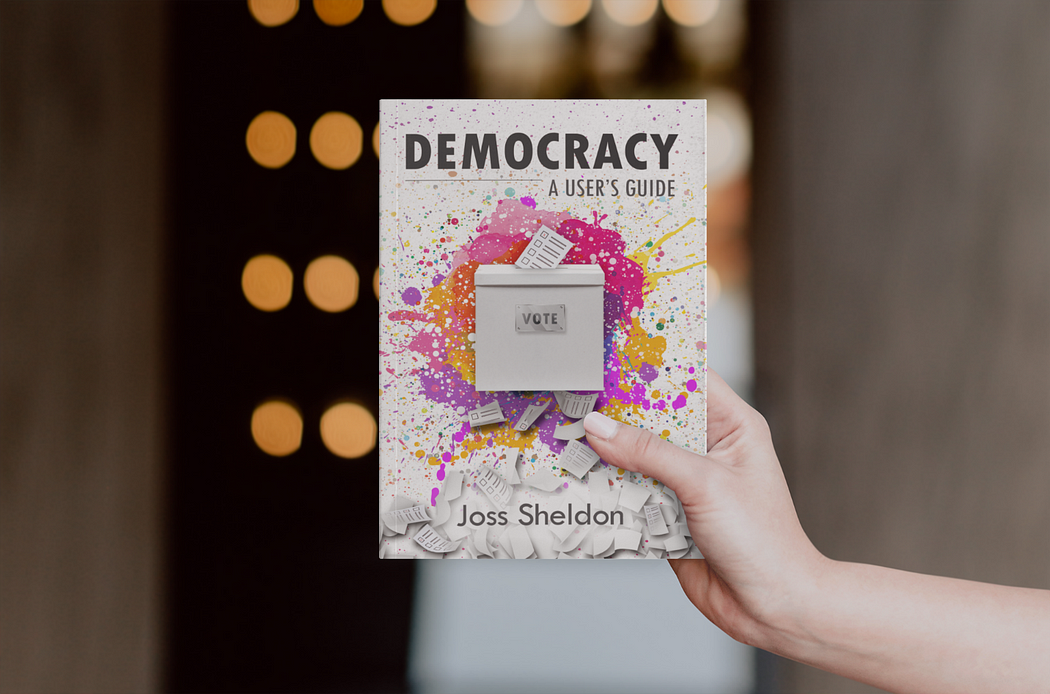In the beginning, we were all hunter-gatherers. Living in bands of twenty or thirty souls, it was hard for a single individual to lord it over the group like some sort of king or dictator. Though individuals tried, they lacked the means to secure their rule. Advanced weaponry, organised armies and private property had not yet been invented. The people could resist their would-be-rulers at every turn.
We can see such behaviour at work among contemporary hunter-gatherer groups…
If an Utku Eskimo were to show any sign of anger, their peers would soon ostracise them; banishing them to the fringes of society, from where it would be impossible for them to rise up and rule the group. If a !Kung hunter were to boast about the meat they brought home from the Kalahari desert, and use it to form alliances, they would be roundly ridiculed for their arrogance; losing them the respect they needed to rule. The San Blas Cuna make decisions at regular meetings, in which everyone has the right to speak. Whilst they do have nominal leaders, elected by the group, such individuals are regularly mocked; a practice that keeps them humble. If they were to make a unilateral decision, without the consent of their peers, they would be deposed; sent to live on another island, away from the people they betrayed. Tikopian “Boss Boys” are only able to implement a policy after conducting a survey to see if public opinion supports it. If they attempt to impose a policy that does not have the people’s backing, they will face a campaign of mass disobedience. The Nambikuara of Brazil desert unpopular leaders. Some tribal groups even execute them.

!Kung Bushmen of the Kalahari (Wikimedia Commons)
Such strategies served our ancestors for hundreds-of-thousands of years, ensuring that power remained with the people, within their bands. But such bands could always be subverted by outsiders. They needed to unite with other bands for their protection. And so Confederate Democracies were formed.
The Iroquois and Cherokee Confederacies, in what is now the United States, had similar structures. At the local level, they operated direct democracies, much like the hunter-gatherers. Groups held regular meeting, discussed ideas, and voted to make decisions. But they also elected representatives, who were sent to sit on regional and national councils. These made decisions which concerned the nation as a whole: sending diplomatic delegations, declaring war and making peace.
Such councils should not be confused with the sort of parliaments we have today. They were held in public. Any member of the tribe could attend and contribute to debates. And decisions had to be made unanimously. This forced representative to compromise, to account for each other’s views. There could be no “Dictatorship of the majority”.
Similar systems could be found across the globe, before states began to form, within temporary cities — the likes of which existed at Göbekli Tepe, on the Turkish-Syrian border, and at Stonehenge in Britain. Here, hunter-gathers would meet, voluntarily submit to a central council for a short period of time, and then return to wander the forests and plains, free from any sort of central authority.

Göbekli Tepe (Wikimedia Commons)
When states did begin to form, they clung onto some of the democratic customs of their prehistoric ancestors. Most famously, this was the case in Ancient Athens (albeit not for females, slaves and foreigners — all of whom were excluded from the political process).
Enfranchised Athenians were encouraged to attend the Ecclesia between ten and forty times a year. It was at these mass meetings that the big decisions were made; anyone could propose a policy, and everyone had a vote.
Day-to-day affairs, meanwhile, were managed by a representative council: the Boule. It’s five-hundred members were selected at random, a process known as Sortition. They were everyday folk, not career politicians; they only served for a year, and no-one could serve for more than two terms.
Over the centuries that followed, states became more entrenched. Emperors and kings came to rule from on high. Democracy was forced to take a back seat.
Still, democratic institutions did remain intact throughout the Middle Ages. Craftspeople united to form guilds, which united to form free towns; democratic institutions in which all master craftspeople could vote. Peasants from several villages formed councils to manage the Commons; deciding who could access their pastures, how much timber people could take from their forests, and how much water they could take from their canals. Meanwhile, the Benedictine Monasteries applied three types of democracy: They were direct democracies, in which every monk could have a say at monastery meetings. They were representative democracies, who elected abbots to deal with more mundane affairs. And they were economic democracies, in which everyone was expected to contribute an equal amount of labour. Many centuries later, the pirates would adopt a similar system themselves.

“DEMOCRACY: A User’s Guide” by Joss Sheldon
Such institutions kept the idea of democracy alive in the public conscious, eventually inspiring the people to fight back against monarchical rule; winning the reforms which led to the rise of parliamentary democracy…
In England, rebellions broke out in 1549, 1607 and 1631, before the English Revolution of the mid-1600s finally wrestled control away from the crown. Parliament now ruled the nation, but it was far from democratic. It took the Chartist movement to secure votes for men, and the Suffragist movement to secure votes for women. In France, it took a bloody revolution to overthrow the monarchy, and several more centuries to win votes for all. The Civil Rights Movement did eventually enfranchise all Americans, but only in the 1960s.
The history of democracy is far from over. Across the globe, many groups continue to push for the reforms that would make our nations that little bit more democratic. Indeed, this is the subject of the second section of my new book, “DEMOCRACY: A User’s Guide”.
This has been a highly condensed history of democracy. A more thorough narrative can be found in the first section of Joss Sheldon book, “DEMOCRACY: A User’s Guide”.
The ebook version is available from this website, here.
Physical copies are available from Amazon, Barnes & Noble, Waterstones, and all good book-selling websites.
Also in this blog series...
BLOG 2 — DEMOCRATIC EDUCATION: Click here
BLOG 3 — WORKPLACE DEMOCRACY: Click here


Comments ()